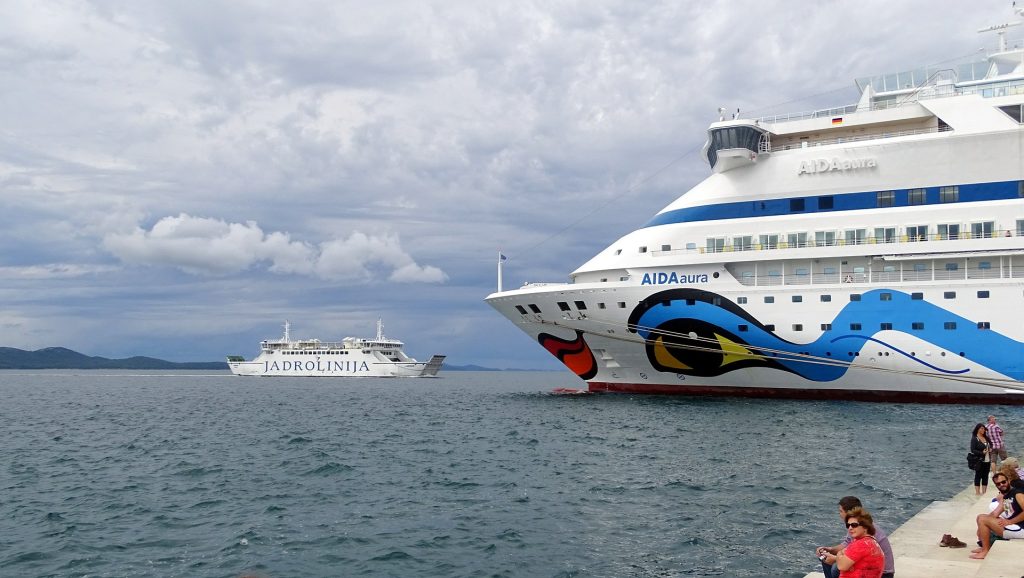The Croatian cruise industry sees signs of optimism after last year’s traffic disruption due to the pandemic, reports HRT News. This year, cruisers are gradually returning, even to the Croatian Adriatic, while recovery and stronger traffic is expected in 2022 and 2023, says Maria Deligianni, director of the CLIA for the Eastern Mediterranean.
CLIA (Cruise Line International Association) is the world’s umbrella association of the cruise industry, whose members are almost all the largest shipping and cruising companies in the world, numerous travel agencies, and others, and in recent years has developed stronger cooperation with Croatia, especially Dubrovnik, and other cities on the Adriatic with larger ports.
After a break of almost a year and a half, large cruisers began arriving in Croatia this year around mid-June in Dubrovnik, where they will continue to arrive, as well as in some other ports.
In the pandemic, the CLIA, with stronger communication and coordination with members, developed security protocols that have now, in a way, become the standard. On cruise ships, no matter how large, there are fewer passengers than before due to the limitation of their number and the implementation of strict measures during navigation and when touring the destination where they dock.
”The measures on cruisers are such that they almost go beyond those carried out in other environments and include various checks, from constant testing of passengers and crew to intensified cleaning”, says Deligianni.
She points out that the gradual lifting of travel restrictions and vaccinations have also brought increased demand, as a result of which about 80 percent of cruisers have announced that they intend to cruise in the next two years.
According to available data, more than a hundred ocean cruises around the world have renewed their service this year, while about 60 will be in Europe, the Canary Islands, and elsewhere in the Mediterranean by the end of July, rising to 72 in August and 81 in September.
“In addition, the CLIA predicts that there will be 270 ocean-going ships in the CLIA member fleet this year, and 20 new ships are expected to be released, while the global order book envisions an investment of $64 billion by 2027”, Deligianni said, who also notes that the recovery of the industry with traffic at previous, pre-pandemic levels is expected in 2022 and 2023.
When asked how Croatia is currently positioned on the global map of the cruise industry, Deligianni answered that it is an important European market and destination for cruises, and Dubrovnik is one of the most popular in the world.
”Croatia is an important destination for cruises, through which, according to data for 2019, it was visited by about 1.3 million passengers, of which 818 million euros are ‘generated’ annually and create more than 14 thousand jobs, and therefore CLIA members highly appreciate the opportunity to return to Croatian ports safely”, says Deligianni.
She says that before the pandemic, Dubrovnik reached about 770,000 cruise passengers a year, which is 60 percent of all passengers from cruises in Croatia, and the CLIA does not expect the pandemic to affect the popularity of Dubrovnik, because it is still highly sought after and safe, for which, as Deligianni points out, the involvement of Mayor Franković and his team, as well as the Croatian Government with decisions on reopening both tourism and cruising, played a major role.
She also reminds that Dubrovnik and CLIA are long-term partners and that they are proud of the Memorandum of Understanding they signed in July 2019 for responsible management of tourism and cruising and preservation and protection of the cultural heritage of Dubrovnik.
Other seaports in Croatia in CLIA consider it important that they can benefit from their unique position ‘in the heart’ of the Adriatic and increase cruise traffic by further engagement on roundabouts and in the development of unique products for trips to the mainland.
Asked about the business and industry losses due to the pandemic, Deligianni noted that it is not easy, but that in cooperation with ministries and health authorities, port associations and administrations, destinations, and others, much has been achieved in several markets regarding the necessary conditions to continue their business.
However, the losses due to the pandemic are also large in the cruise industry, and the global losses are estimated at 77 billion US dollars for the six-month period of interruption of navigation, from March to September 2020.
Deligianni states that globally, this industry contributed 155 billion dollars a year to the world economy before 2020 and had about 1.2 million jobs, of which about 518 thousand have been lost in the pandemic so far.
In Europe alone, the cruise industry generates 53 billion euros a year in the European economy and supports 435 jobs, which is almost 40 percent of all in the world.
”The cruise industry employs a truly global workforce, and crew members are its ‘foundation’ as highly trained and dedicated professionals who help ensure health and safety”, says Deligianni, concluding that prior to the pandemic, large CLIA cruise ships employed more than 200,000 seafarers from more than a hundred countries, and faced with border closures and travel restrictions in 2020, have also greatly helped in the repatriation of various passengers and even crew members to their homes.
The Pearl of the Adriatic for some, King’s Landing for others, walled city Dubrovnik is UNESCO World Heritage Site perfection for all. Tips for travel, food, accommodation, sights & things to do can be found in Total Croatia’s Dubrovnik in a page. Read it here, now in your language!
For more on business in Croatia, CLICK HERE.








